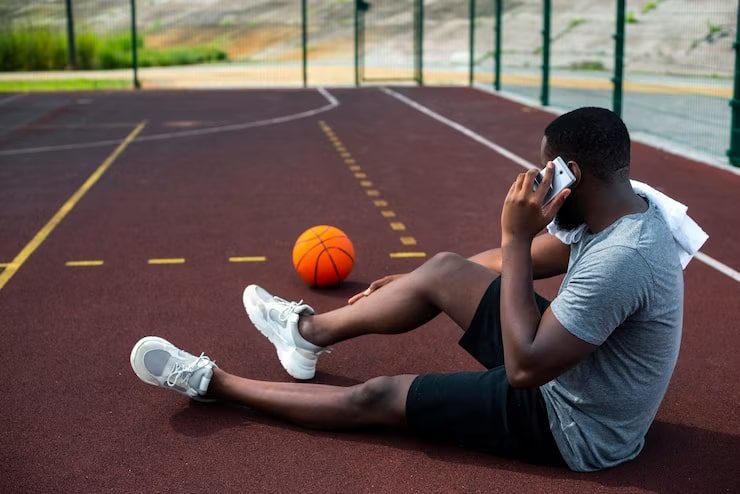Being active is the ultimate life goal. It keeps you energized, mentally sharp, and looking fly (hello, endorphin rush!). But let’s be honest, nobody wants to get sidelined by pesky sports injuries. Trust me, sitting on the bench with an ice pack while your friends are crushing it isn’t exactly a vibe.
That’s why we’re here to talk prevention – because let’s face it, an ounce of prevention is worth a pound of ouch. So, lace up your metaphorical sneakers and get ready to learn how to be a total injury-fighting boss.
Warm Up Like You Mean It (Because You Do)
Think of your body like a high-performance engine. You wouldn’t just slam your foot on the gas and expect it to purr smoothly, would you? The same goes for exercise. Dedicate 10-15 minutes to a dynamic warm-up to get your blood flowing and muscles loose. Think light jogs, arm circles, and high knees – anything that gets your heart rate up and prepares your body for movement.
Here’s the secret sauce: don’t be a weekend warrior. If you’re a casual athlete who only hits the gym on Saturdays, ease into your routine. Start slow and gradually increase the intensity to avoid shocking your muscles – trust me, they won’t be thanking you for it later.
Stretch It Out – Don’t Be a Stiff
Imagine trying to fit into skinny jeans without loosening them first – that’s what happens to tight muscles. Stretching before and after exercise increases flexibility, which can significantly reduce the risk of common injuries. Hold each stretch for 15-30 seconds, focusing on major muscle groups like your hamstrings, quads, and shoulders. Remember, stretching shouldn’t be painful – a slight tension is good, but stop if you feel any sharp twinges.
Listen to Your Body – It’s Talking to You
Your body is your temple, treat it with respect! Pushing yourself is great, but there’s a fine line between dedication and disaster. Pay attention to your body’s signals. Feeling achy or sore? Take a break! Don’t be afraid to modify the rehabilitation exercises or take rest days. Remember, self-care isn’t selfish, it’s essential for staying healthy and active in the long run.
Fuel Your Machine – Food is Your Friend
Think of food as the fuel that keeps your body running. Eating a balanced diet with plenty of fruits, vegetables, whole grains, and lean protein provides the essential nutrients your muscles need to function properly and recover from exercise. Don’t forget to stay hydrated – dehydration can lead to muscle cramps and fatigue, putting you at a higher risk for injury.
Gear Up Like a Champion
Having the appropriate equipment can significantly impact the outcome. Invest in proper footwear that provides good support for your specific activity. A worn-out pair of trainers might seem comfy, but they won’t offer the stability your body needs to avoid those nasty ankle rolls.
For sports with high-impact or collision risks, consider protective gear like helmets, pads, or braces. It might feel a little dorky at first, but trust us, the feeling of being safe and preventing a major injury is way cooler.
The RICE Method – Your Post-Workout BFF
Even with the best prevention methods, minor sports injuries can happen. But fear not, the RICE method is your post-workout BFF. Here’s the lowdown:
- Rest: Give the injured area a break. Avoid any activity that might aggravate the injury.
- Ice: Apply ice packs to the affected area for 15-20 minutes at a time, several times a day. Wrap the ice pack in a towel to avoid skin irritation.
- Compression: Use an elastic bandage to provide gentle support and reduce swelling. Just make sure it’s not too tight to restrict blood flow.
- Elevation: If possible, elevate the injured area above the level of your heart to help reduce swelling.
Return-to-play protocols outline the systematic steps and procedures athletes must follow to safely resume participation in their sport after injury or extended absence.
Conclusion
If the pain is severe, persistent, or accompanied by swelling, bruising, or deformity, don’t hesitate to consult a healthcare professional. They can properly diagnose the injury and recommend the best course of treatment to get you back in the game faster. By following these tips, you can significantly reduce your risk of sports injuries and stay active for the long haul. Remember, prevention is key, but don’t be afraid to listen to your body and take a break when needed. Now get out there, conquer your workout, and keep that winning feeling alive!







